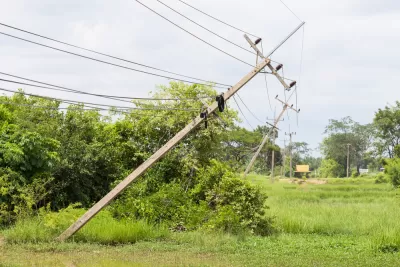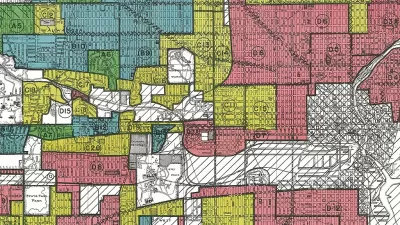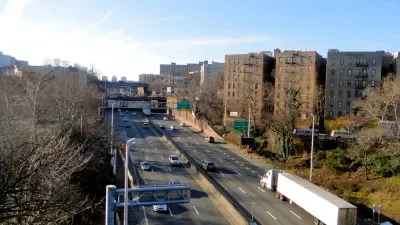The challenges of bridging the digital divide are exacerbated by the racist legacies of previous infrastructure systems, according to a recent presentation to the New York Regional Plan Association.

Emily Thenhaus shares a dispatch from the 2016 Regional Plan Association Assembly—specifically from a session about bridging the gap in digital access in the New York region.
Among the presenters during the session was New York City Counsel to the Mayor Maya Wiley, who highlighted the systematic roots of the digital divide. According to Wiley, the broadband system is being built on top of a deliberately discriminatory phone system. The following is taken directly from Wiley's presentation:
When I was in the U.S. Attorney’s office, when the Telecommunications Act of 1996 was being debated, actually civil rights groups including the NAACP, including La Raza were already working on the fact that the telephone system itself had actually redlined communities of color and that everyone understood the infrastructure was going to follow a lot of that proprietary infrastructure that was telephone lines to go to a more advanced form of technology that was going to get us to broadband.
So literally, without necessarily having racial intent to discriminate, because we are building on top of a discriminatory infrastructure, we are reinforcing over and over again that discrimination that happened decades before.
Thenhaus's article includes a full audio recording of the panel, which included BetaNYC Executive Director Noel Hidalgo, Newark Chief Information Officer Seth Wainer, Counsel to the Mayor or New York City Maya Wiley, and Knight Foundation Director of Community and National Strategy Benjamin de la Peña as moderator.
FULL STORY: Wiley: ‘…We are building on top of a discriminatory infrastructure’

Planetizen Federal Action Tracker
A weekly monitor of how Trump’s orders and actions are impacting planners and planning in America.

Canada vs. Kamala: Whose Liberal Housing Platform Comes Out on Top?
As Canada votes for a new Prime Minister, what can America learn from the leading liberal candidate of its neighbor to the north?

The Five Most-Changed American Cities
A ranking of population change, home values, and jobs highlights the nation’s most dynamic and most stagnant regions.

San Diego Adopts First Mobility Master Plan
The plan provides a comprehensive framework for making San Diego’s transportation network more multimodal, accessible, and sustainable.

Housing, Supportive Service Providers Brace for Federal Cuts
Organizations that provide housing assistance are tightening their purse strings and making plans for maintaining operations if federal funding dries up.

Op-Ed: Why an Effective Passenger Rail Network Needs Government Involvement
An outdated rail network that privileges freight won’t be fixed by privatizing Amtrak.
Urban Design for Planners 1: Software Tools
This six-course series explores essential urban design concepts using open source software and equips planners with the tools they need to participate fully in the urban design process.
Planning for Universal Design
Learn the tools for implementing Universal Design in planning regulations.
New York City School Construction Authority
Village of Glen Ellyn
Central Transportation Planning Staff/Boston Region MPO
Institute for Housing and Urban Development Studies (IHS)
City of Grandview
Harvard GSD Executive Education
Regional Transportation Commission of Southern Nevada
Toledo-Lucas County Plan Commissions





























